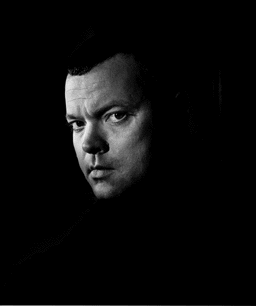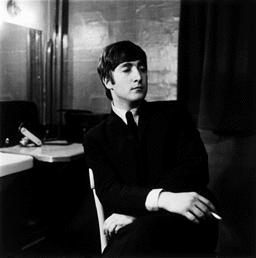Jane Bown facts for kids


Jane Hope Bown (born March 13, 1925 – died December 21, 2014) was a famous English photographer. She worked for The Observer newspaper starting in 1949. Jane Bown was known for her amazing portraits, which were mostly taken in black and white. She used only the light that was available, not special studio lights. Another famous photographer, Lord Snowdon, called her "a kind of English Cartier-Bresson," comparing her to a very well-known French photographer.
Contents
About Jane Bown
Early Life and Education
Jane Bown was born in Eastnor, Herefordshire on March 13, 1925. She often said her childhood was happy. She grew up in Dorset with women she thought were her aunts. When she was twelve, Jane found out something surprising: one of these women was actually her mother, and her parents were not married. This discovery made her teenage years a bit difficult, and she acted coldly towards her mother for a while. Her father was Charles Wentworth Bell, who was over sixty years old and had employed her mother as a nurse.
Before becoming a photographer, Jane worked for the WRNS. This was a part of the British Navy for women. One of her jobs was helping to plan the important D-Day invasion during World War II. Because of this work, she received money to help her go to school. She then decided to study photography at Guildford School of Art. Her teacher there was Ifor Thomas.
Starting Her Photography Career
Jane Bown first started her career taking pictures at weddings. But in 1951, her teacher, Ifor Thomas, introduced her to Mechthild Nawiasky. Mechthild was a picture editor at The Observer newspaper. Mechthild showed Jane's photos to the newspaper's editor, David Astor. He was very impressed! He immediately asked Jane to photograph the famous thinker Bertrand Russell. This was the start of her long and successful career at the newspaper.
Her Unique Photography Style
Jane Bown mostly took pictures in black-and-white. She loved to use only the natural light around her, which is called "available light." She didn't use big, fancy studio lights.
In her early career, until the early 1960s, she often used a Rolleiflex camera. Later, she switched to a 35 mm Pentax SLR camera. Eventually, she found her favorite camera, the Olympus OM-1, and often used an 85 mm lens with it.
Famous Photos and Subjects
Jane Bown photographed hundreds of people throughout her career. Many of them were very famous! She took pictures of actors like Orson Welles and Woody Allen, writers like Samuel Beckett and Truman Capote, and musicians like Cilla Black, P. J. Harvey, John Lennon, Jarvis Cocker, and Björk. She also photographed politicians like Margaret Thatcher and even Queen Elizabeth II for her eightieth birthday portrait.
Documenting Life: Photojournalism
Besides portraits, Jane Bown also did a lot of photojournalism. This means she took pictures to tell stories in newspapers and magazines. She created photo series about many different parts of British life. For example, she photographed people picking hops, protests at the Greenham Common Women's Peace Camp, and scenes from Butlin's holiday resorts. She also captured life at the British seaside and even the Glastonbury Festival in 2002.
Much of her social documentary work, which showed everyday life and important events, was not widely seen until her book Unknown Bown 1947–1967 was released in 2007. In the same year, some of her photos from Greenham Common were shown at Tate Britain, a major art gallery, as part of a big photography exhibition called How We Are: Photographing Britain.
In 2014, a documentary film about Jane Bown was made called Looking For Light. In the film, Jane talks about her life, and people she photographed or worked with share their thoughts about her.
Later Life and Family
In 1954, Jane Bown married Martin Moss, who worked in fashion retail. They had three children together: Matthew, Louisa, and Hugo. Martin passed away in 2007, before Jane.
Jane Bown died on December 21, 2014, when she was 89 years old. After her death, Lord Snowdon praised her work again. He said she produced "photography at its best. She doesn't rely on tricks or gimmicks, just simple, honest recording, but with a shrewd and intellectual eye."
Awards and Recognition
- 1985: She was made a Member of the Order of the British Empire (MBE). This is a special award from the British monarch for great achievements.
- 1995: She became a Commander of the Order of the British Empire (CBE), which is an even higher honor.
- 2000: She received an Honorary Fellowship from The Royal Photographic Society.
Exhibitions of Her Work
Jane Bown's photographs have been shown in many art galleries and museums. Here are some of her major exhibitions:
- 1980-1: The Gentle Eye, at the National Portrait Gallery, London.
- 2003: Rock 1963–2003, at the Guardian Newsroom, London.
- 2005: Jane Bown, at the National Portrait Gallery, London.
- 2007-8: Unknown Bown 1947–1967, at the Guardian Newsroom, London.
- 2007: How We Are: Photographing Britain, at Tate Britain. This exhibition included her work from Greenham Common.
- 2009-2010: Jane Bown: Exposures, at the National Portrait Gallery, London.
Books by Jane Bown
Jane Bown also published several books featuring her photographs:
- The Gentle Eye (1980)
- Women of Consequence (1986)
- Men of Consequence (1987)
- The Singular Cat (1988)
- Pillars of the Church (1991)
- Observer (1996)
- Faces: The Creative Process Behind Great Portraits (2000)
- Rock 1963–2003 (2003)
- Unknown Bown 1947–1967 (2007)
- Exposures (2009)
- A Lifetime of Looking (2015)
- Jane Bown: Cats (2016)
Where Her Photos Are Kept
Jane Bown's important photographs are kept in several major collections, so people can see them for many years to come:

